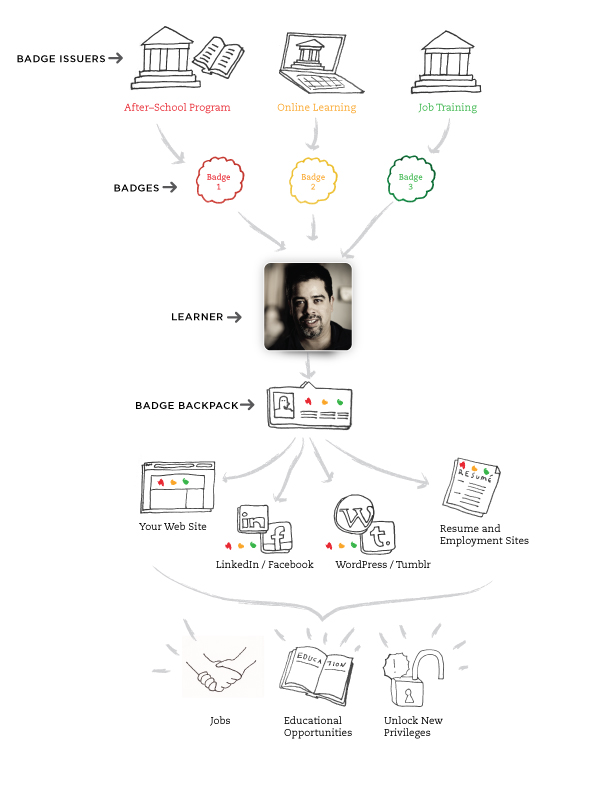Mozilla officially released Open Badges 1.0 - an open certificate standard for online learning

The idea behind Open Badges is as simple as large-scale - to combine any curriculum, courses and lessons available on the Internet using the open standard of badges that are given to participants at the end of the course. In other words, Open Badges are standard mini-diplomas that can be placed on social networks and professional communities, on a personal website or in a resume.
Any organization can issue badges, the significance and “steepness” of each badge is determined only by the authority of the person who issued it. It can be a small company or a huge university. There are now 600 organizations on the list of participants, including the Smithsonian Museum of American Art, the Department of Education of New York, and the University of Illinois. Microsoft, NASA, Pixar and others have already announced their plans to join the Open Badges infrastructure.
Higher education costs a lot of money today, and if online courses, which are often taught by teachers of the best universities, can provide students with knowledge comparable to what students in their universities receive, then universities are in no hurry to give diplomas and certificates. Many believe that the traditional closed and conservative system of higher education is needed. "jailbreak . "Open Bages can become the necessary foundation for a worldwide system of affordable independent education and knowledge validation.

Technically, each icon is a JSON data structure containing a hash of the recipient’s mail address, information about the name of the icon that issued his organization, and links to his image and a detailed description of the criteria for issuing the badge, The badge can be recalled if it was issued by mistake, or obtained dishonestly. Here is an example of such a structure:
{
"name": "Awesome Robotics Badge",
"description": "For doing awesome things with robots that people think is pretty great.",
"image": "https://example.org/robotics-badge.png",
"criteria": "https://example.org/robotics-badge.html",
"tags": ["robots", "awesome"],
"issuer": "https://example.org/organization.json",
"alignment": [
{ "name": "CCSS.ELA-Literacy.RST.11-12.3",
"url": "http://www.corestandards.org/ELA-Literacy/RST/11-12/3",
"description": "Follow precisely a complex multistep procedure when carrying out experiments, taking measurements, or performing technical tasks; analyze the specific results based on explanations in the text."
},
{ "name": "CCSS.ELA-Literacy.RST.11-12.9",
"url": "http://www.corestandards.org/ELA-Literacy/RST/11-12/9",
"description": " Synthesize information from a range of sources (e.g., texts, experiments, simulations) into a coherent understanding of a process, phenomenon, or concept, resolving conflicting information when possible."
}
]
}
There are two mechanisms for authenticating the icon - unique URLs and a digital signature, but so far only the first one works. Specifications, a detailed description of the process of issuing and confirming badges and all the necessary tools and sources are published on Github .
Source - Mozilla Open Bages Blog .
